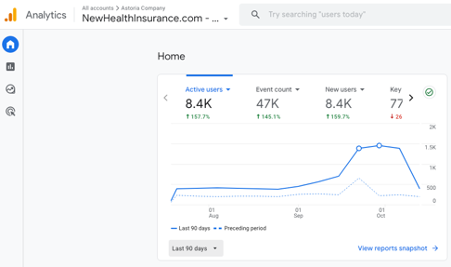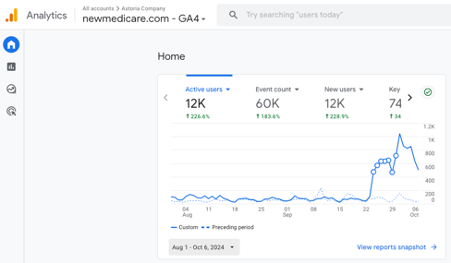Understanding Publishing Empires: Definition and Scope
Publishing empires refer to large, influential organizations that dominate the publishing industry through a diverse portfolio of media assets. These entities often encompass a wide range of publications, including books, magazines, newspapers, and digital content platforms. The term ‘publishing empires’ evokes images of well-established brands that have built their reputation over decades, leveraging their extensive resources to reach vast audiences. The scope of these empires extends beyond mere content creation; they also engage in strategic marketing, distribution, and sometimes even the acquisition of smaller publishing houses to expand their influence and market share.
Creating a publishing empire requires a multifaceted approach that combines creativity, business acumen, and a deep understanding of market dynamics. Aspiring entrepreneurs must focus on building a strong brand identity and developing a diverse range of content that appeals to various demographics. Additionally, establishing robust distribution channels and utilizing digital platforms are crucial for reaching a global audience. By fostering relationships with authors, editors, and other industry professionals, one can lay the groundwork for a successful publishing empire that not only thrives in the competitive landscape but also adapts to the ever-evolving demands of readers.
The Key Components of a Successful Publishing Empire
Creating a successful publishing empire requires a strategic approach that encompasses several key components. First and foremost, a clear vision is essential. This vision should outline the niche or market segment the empire will target, whether it be fiction, non-fiction, educational materials, or digital content. Understanding the audience’s needs and preferences is crucial for developing content that resonates with them. Additionally, establishing a strong brand identity helps in differentiating the publishing empire from competitors, fostering loyalty among readers and authors alike. This identity should be reflected in all aspects of the business, from the design of the website to the tone of the marketing materials.
Another vital component is the development of a robust distribution strategy. In the age of digital media, having a multi-channel approach is imperative for reaching a wider audience. This includes leveraging online platforms, social media, and traditional retail channels to maximize visibility. Furthermore, building relationships with authors, editors, and other industry professionals can enhance the quality of content produced and expand the empire’s reach. Finally, continuous evaluation and adaptation of strategies based on market trends and reader feedback will ensure the longevity and success of the publishing empire in an ever-evolving landscape.
Strategies for Building Your Own Publishing Empire
Building your own publishing empire requires a strategic approach that encompasses various facets of the publishing industry. First and foremost, it is essential to identify your niche. This involves understanding the specific audience you wish to target and the type of content that resonates with them. By focusing on a particular genre or subject matter, you can establish authority and credibility, which are crucial for attracting a loyal readership. Additionally, leveraging digital platforms and social media can amplify your reach, allowing you to connect with potential readers and collaborators. Consistency in content quality and frequency is vital, as it helps in building a recognizable brand that stands out in the crowded publishing landscape.
Another key strategy for creating publishing empires is to diversify your revenue streams. Relying solely on book sales may not be sustainable in the long run; therefore, consider exploring other avenues such as merchandise, online courses, or subscription models. Collaborating with other authors or influencers can also expand your audience base and enhance your visibility. Furthermore, investing in marketing and SEO practices will ensure that your content is discoverable, driving organic traffic to your publications. By implementing these strategies, you can lay a solid foundation for your publishing empire, ultimately leading to long-term success and growth in the industry.
Leveraging Technology in Your Publishing Empire
In the modern landscape of publishing empires, leveraging technology is not just an option; it is a necessity. The advent of digital tools has transformed how content is created, distributed, and consumed. From advanced content management systems to sophisticated analytics platforms, technology enables publishers to streamline operations, enhance audience engagement, and optimize revenue streams. By utilizing these tools, aspiring empire builders can efficiently manage their workflows, ensuring that high-quality content reaches their target audience promptly. Furthermore, the integration of artificial intelligence and machine learning can provide valuable insights into reader preferences, allowing for more personalized content delivery and improved marketing strategies.
Moreover, the rise of social media and digital marketing platforms has opened new avenues for promoting publishing empires. These channels not only facilitate direct communication with audiences but also allow for the viral spread of content, significantly increasing visibility and reach. By harnessing the power of SEO and targeted advertising, publishers can attract a larger readership and build a loyal community around their brand. In this digital age, the ability to adapt and innovate through technology is crucial for anyone looking to establish a successful publishing empire, ensuring they remain competitive and relevant in an ever-evolving market.
Marketing and Distribution: Expanding Your Publishing Reach
Marketing and distribution are critical components in the journey of building successful publishing empires. To expand your reach, it is essential to develop a comprehensive marketing strategy that encompasses both digital and traditional channels. Utilize social media platforms, email marketing, and content marketing to engage with your target audience effectively. Additionally, consider leveraging partnerships with influencers and other authors to tap into their established networks. By creating a strong online presence and utilizing various promotional tactics, you can significantly enhance the visibility of your publications and attract a broader readership.
Furthermore, distribution plays a pivotal role in ensuring that your works reach potential readers. Establishing relationships with distributors and retailers, both online and offline, is vital for the success of your publishing empires. Explore various distribution models, such as print-on-demand and e-book platforms, to cater to diverse consumer preferences. Additionally, consider international markets to further expand your reach. By strategically combining marketing efforts with robust distribution channels, you can create a sustainable framework that not only promotes your works but also solidifies your position in the competitive publishing landscape.
Case Studies: Successful Publishing Empires and Their Secrets
Examining successful publishing empires reveals common strategies that contribute to their growth and sustainability. For instance, Penguin Random House, one of the largest publishing houses globally, has thrived by diversifying its portfolio and embracing digital transformation. By acquiring smaller imprints and expanding into various genres, they have established a robust presence in the market. Additionally, their commitment to nurturing author relationships and investing in marketing campaigns has allowed them to adapt to changing consumer preferences, ensuring their relevance in an increasingly competitive landscape. This adaptability is a hallmark of successful publishing empires, demonstrating that a willingness to innovate is crucial for long-term success.
Another notable example is HarperCollins, which has effectively leveraged technology to enhance its publishing processes. By utilizing data analytics, they can identify emerging trends and reader preferences, allowing them to make informed decisions about which titles to publish. Furthermore, their global reach enables them to tap into diverse markets, maximizing their potential audience. The success of these publishing empires underscores the importance of strategic planning, market awareness, and the ability to pivot in response to industry changes. Aspiring publishers can learn valuable lessons from these case studies, emphasizing the need for a multifaceted approach to building a thriving publishing empire.





